HEY, HEY YOU! I’ve recently updated this recipe over here — you may want to pop over and use the new one instead! It’s been refined over the past five years but I wanted to keep this one (instead of doing a 301 redirect for all you good blogger types) because I do think it’s important to keep a record of where you’ve been. ~ JJ
———
I probably shouldn’t start a pie crust post by telling you that I don’t really like crust. Scandalous isn’t it? Don’t get me wrong, I appreciate it, and am very picky about it, but like it? Meh. I’d rather eat the filling with a spoon. FYI, when I say ‘I’d rather’ it means ‘I do’, those two half eaten Pumpkin Pies in my fridge, there is a good chance that one of them has half a plate of perfectly preserved crust with all pie filling mysteriously missing.
In any case, yesterday I promised you Pie Crust. It’s the least I could do, leaving you with a Pumpkin Pie recipe and no crust. I made this with the same intention as the pie – all the deliciousness, none of the badness – it was a roaring success. I honestly wasn’t sure how this was going to turn out… but it is crumbly and rich and hearty and would work well for pretty much any pie.
A combination of my 50-year-old tried and tested shortcrust recipe, an oil pastry and a bit of experimentation, it’s a truck load better for you than traditional pastry and is pretty darn simple to make. You could even add spices or herbs to it for variations on flavour.
Coconut oil is liquid at a warm-ish room temperature and hard as a rock when refrigerated – you want it in-between to make the dough. If it is winter, room temp is usually perfect, but if it is too melted or goopy [technical term], pop it in the fridge for a few minutes and stir a couple times. Honestly you could probably just use it as a liquid oil and mix it through but I haven’t tried it this way.
The dough is a bit wetter than traditional shortcrust – add the full 3T of water anyway. The first one I made only used 2T and it was just a bit too hard to work with [the next few pics are from the 2T water batch, the 3T version didn’t crumble nearly as much when rolling or getting it into the pan]
To roll this out you want it to be coolish room temp. I use baking [parchment] paper to roll out crusts, cookies etc and it works really well here, you don’t need any extra flour either. The dough will start out crumbly, just keep tapping it together with your hands as you roll – it will be perfect in no time as it warms up.
Although slightly fiddly to get into the pan, the dough is pretty forgiving overall and a cinch to patch and stick together without needing any extra water. It is also stable enough to make it fancy and scalloped or just finish the edge plain. It really just depends on what kind of mood you are in and what the filling calls for. You may need to stick it in the fridge briefly before making a fancy finished edge – again, it depends on the temp of your kitchen and your hands. My hands are always freezing – not a particularly convenient trait, aside from making pastry, it’s perfect for making pastry.
Use any filling you wish. Bake according to whatever pie recipe you are using. Don’t feel guilty about eating the crust.
Whole Spelt Pie Crust
HI, IF YOU SOMEHOW MISSED THE NOTE ABOVE… I’ve recently updated this recipe over here — you may want to pop over and use the new one instead! ~ JJ
———
Ingredients:
- 2 c whole spelt flour (240 g)
- ½ c virgin coconut oil, semi-solid (125 ml; 110 g)
- ½ tsp sea salt
- 5 – 6 US Tbsp ice water (75 – 90 mls)
Quick Method:
Mix together flour and salt. Cut in coconut oil until mixture resembles bread crumbs. Gently toss through water.
Press into a round and refrigerate. Bring to room temp, roll out, line pie pan and fill as desired. Bake according to chosen pie recipe.
Full Method:
Stir together flour and salt. Cut through coconut oil with a pastry cutter or two knives until mixture resembles breadcrumbs. Coconut oil should be the consistency of vegetable shortening or firm butter*.
Add water and gently toss through with a fork. Press together with your hands and form into flat-ish disk. I found this dough is wetter initially than traditional shortcrust but any less water makes it too crumbly to work with later on. The flour absorbs the moisture as it rests in the fridge.
Wrap and refrigerate for at least an hour. I make mine the day before I need it to save time. When ready to bake the pie, allow dough to sit out for about half an hour to come to room temp – coconut oil is solid when cold and it needs to soften just a bit.
Use a piece of baking [parchment] paper to roll out the dough. Press gently with a rolling pin to get it started and continue to press any cracks or crumbs back together as you roll. As it warms up a bit it will smooth out quite nicely. Loosen once or twice from the paper to make it easier to work.
Gently flip over on to pie pan, remove paper and fit to base. Create edge of your choosing and refrigerate for 15 minutes before filling and baking according to your pie recipe.
*Notes:
- Coconut oil is liquid at a warm-ish room temperature. If it is winter, room temp should be fine, but if it is too melted or soft, pop it in the fridge for a few minutes and stir a couple times. Try not to let it get too cold as it will be completely solid
- You could substitute vegetable shortening [Crisco in America-land, I have yet to find a substitute in Australia] and maybe a pat of butter like in traditional pastry but coconut oil is better for you and still makes a nice flaky crust.
- UPDATE: I originally had ‘coconut butter’ listed as an alternative to the coconut oil in the ingredient list but have since discovered it it not the same thing. Coconut butter has coconut flesh as well as the oil in it. Use only the oil for this recipe.

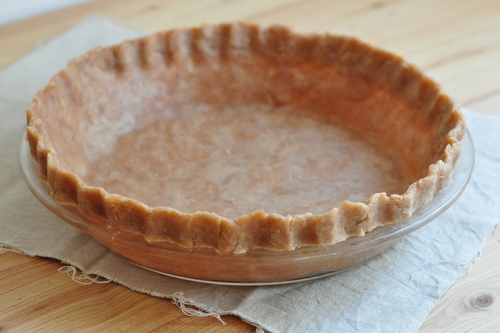





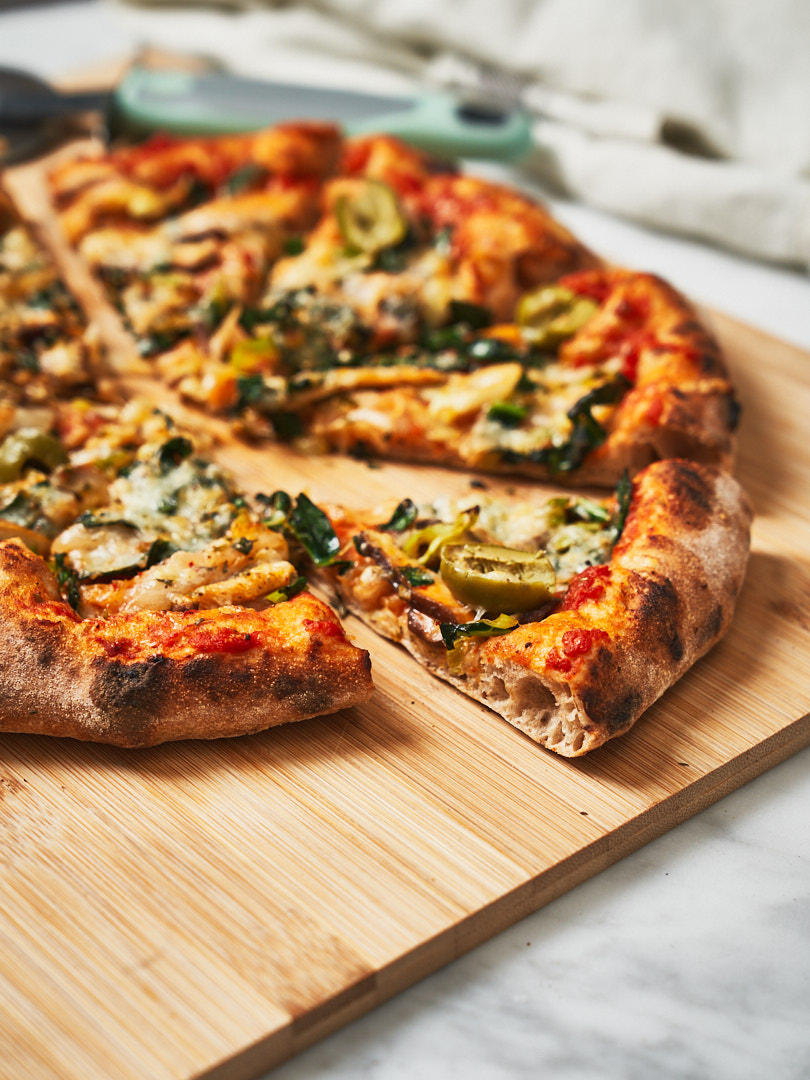
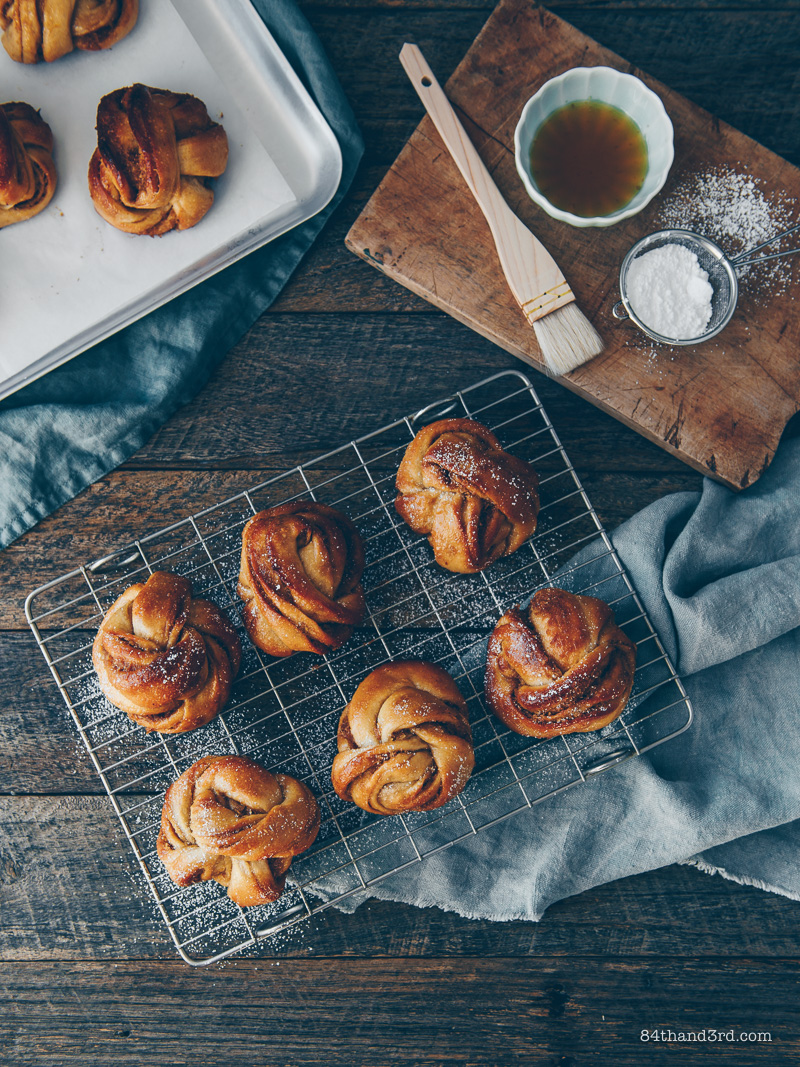
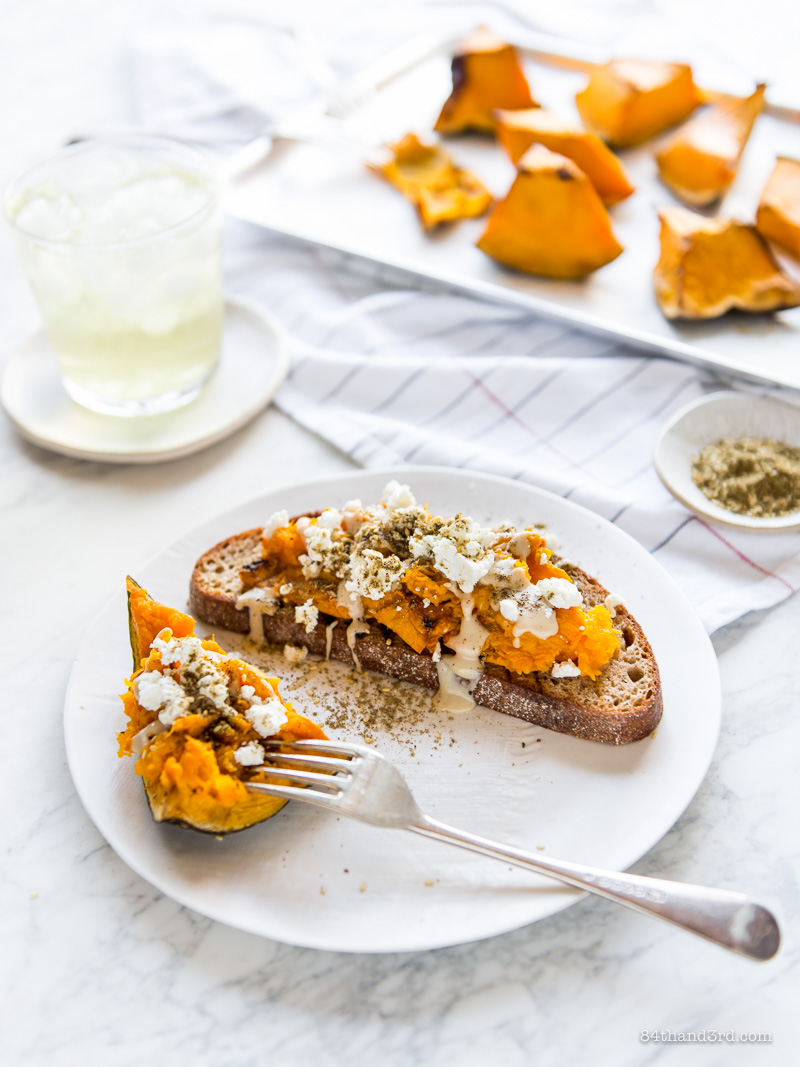


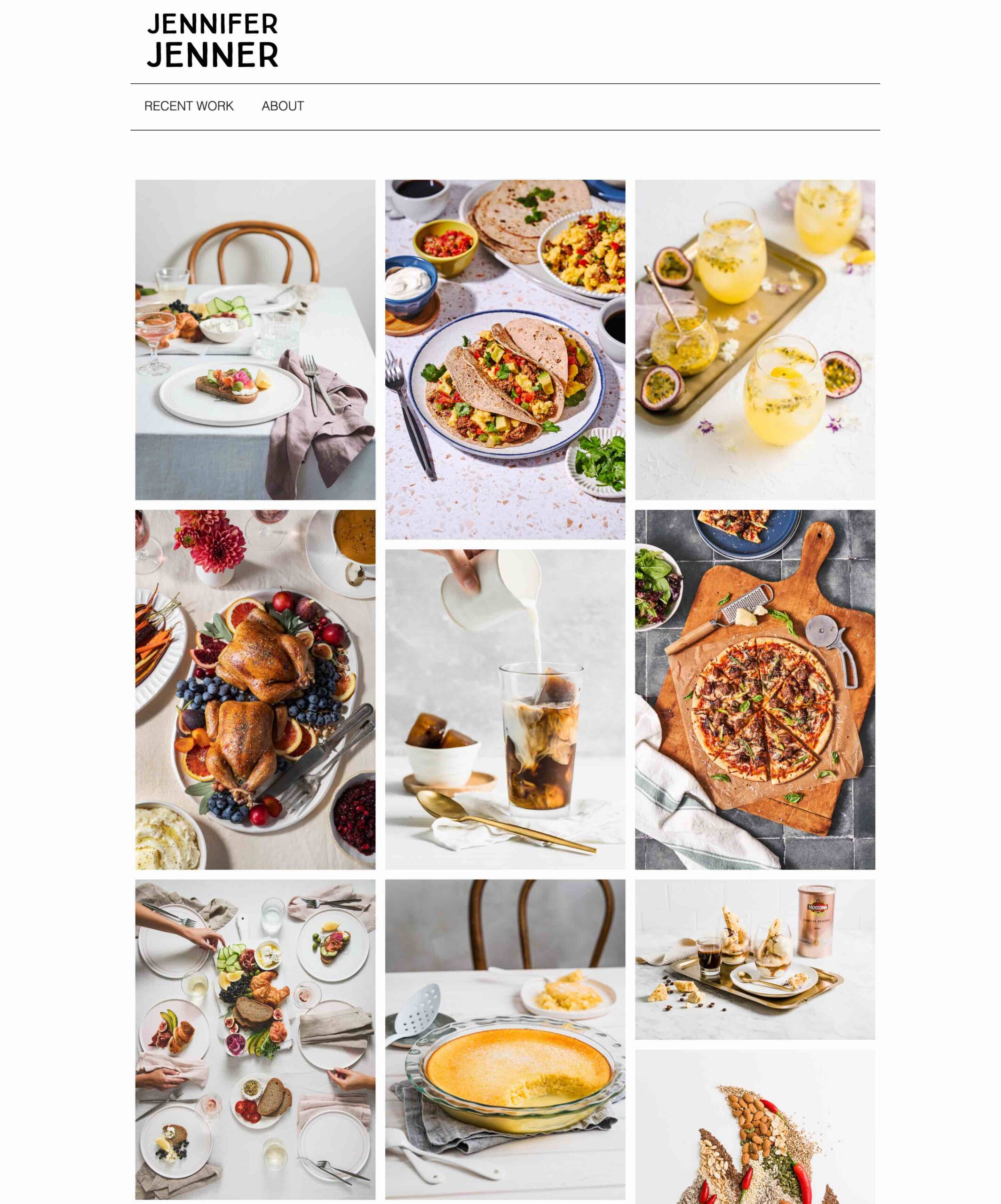
This looks like a fantastic pie crust!!! I’m yet to experiment with flours for my pie crusts. I usually go straight to Dorie Greenspans recipe as it’s fabulous.
By the way, loved your technical term “too melted and goopy”. That made me laugh!
This is the first non-white flour one I have made, v excited it worked out!
I love pumpkin pie without the crust!! I make it with crust because that’s what you’re supposed to do and my family would be irritated if I made it any other way. I eat just the filling and leave as you describe perfectly preserved crust. It takes pure and raw talent to extract that filling and leave the crust behind. Your spelt crust does look tasty. I may try to make it someday. However, finding virgin coconut oil in Wisconsin may be difficult. I love your site. I will visit again!
Thanks Ann, any health food store should have virgin coconut oil – even in Wisconsin 😉 but you can find it from quite a few online places as well. I’ve been using it quite a bit lately. Glad to find a kindred pie-filling-with-a-spoon soul!
it looks so perfect! it is basic to have a pie crust recipe
Is copha the same as solid coconut oil? I have been wondering this for a while as I have some of that in the fridge in Australia. I will try this I love the swirly one it looks great. 🙂
Hi Jayne, I believe copha is refined and pretty horrid stuff… Extra Virgin Coconut Oil has great health benefits. You could certainly use the copha but it wouldn’t be nearly as healthy ;D
Amazing recipe! The pie crusts I made turned out fabulous.
I am just experimenting with using spelt instead of all purpose flour and my first try with crisco instead of coconut oil taste great but the crust is very crumbly and not sure its going to hold together enough to scoop out pie. Any suggestions?
Hi Kathy, did you try my recipe or another one? You need to cut the fat through the flour well (until like breadcrumbs) and add enough water – as per the recipe “I found this dough is wetter initially than traditional shortcrust but any less water makes it too crumbly to work with later on. The flour absorbs the moisture as it rests in the fridge.” Spelt flour doesn’t have as much gluten as standard wheat flour so the water is necessary to hole it all together. ~ J
This looks great! Does this crust needs a blind bake before the filling gets in?
Hi Valesca, thanks! If you’d normally blind bake the crust for your filling then do the same with this one, if you’d normally fill it then bake, do that. It works either way! ~ JJ
can the pastry be frozen before baking?
Not sure as I always make it fresh but I don’t see why not. Just make sure to thaw fully in the fridge before rolling and baking. ~ JJ
Dear JJ thx for this recipe! I just made it according to ur recipe however after I baked it (and then filled it) for 25 min at 180 celsius it completely broke apart into piecea so I wasn’t able to finish with filling and the rest..what did I do wrong acxording to ur opinion? Such a pitty because it is soooo tasty
Hi Ivona, I’ve always filled the raw crust then baked it and haven’t had any issues. If blind-baking the crust before filling, most crusts only need 12-15 minutes, 25 mins would have dried it out far too much (not sure what recipe your timing came from as I don’t mention blind-baking above). ~ JJ
What temp and length of time would you suggest if I wanted to make mini pies in a muffin tin?
Hi Erin, it’s more dependant on your filling than anything else, as that still needs to bake through so I can’t really advise. If blind baking I’d do it at 180C/350F for 10 mins with weights then another 5 – 10 with the paper removed. ~JJ
Can I make a lattice with this crust?
Hi Cally, I don’t see why not, although it’s not as elastic as traditional crust – you may want to check out the updated recipe here though – http://84thand3rd.com/vegan-spelt-pie-crust ~ JJ
Hello,
Would this recipe work for sausage rolls??